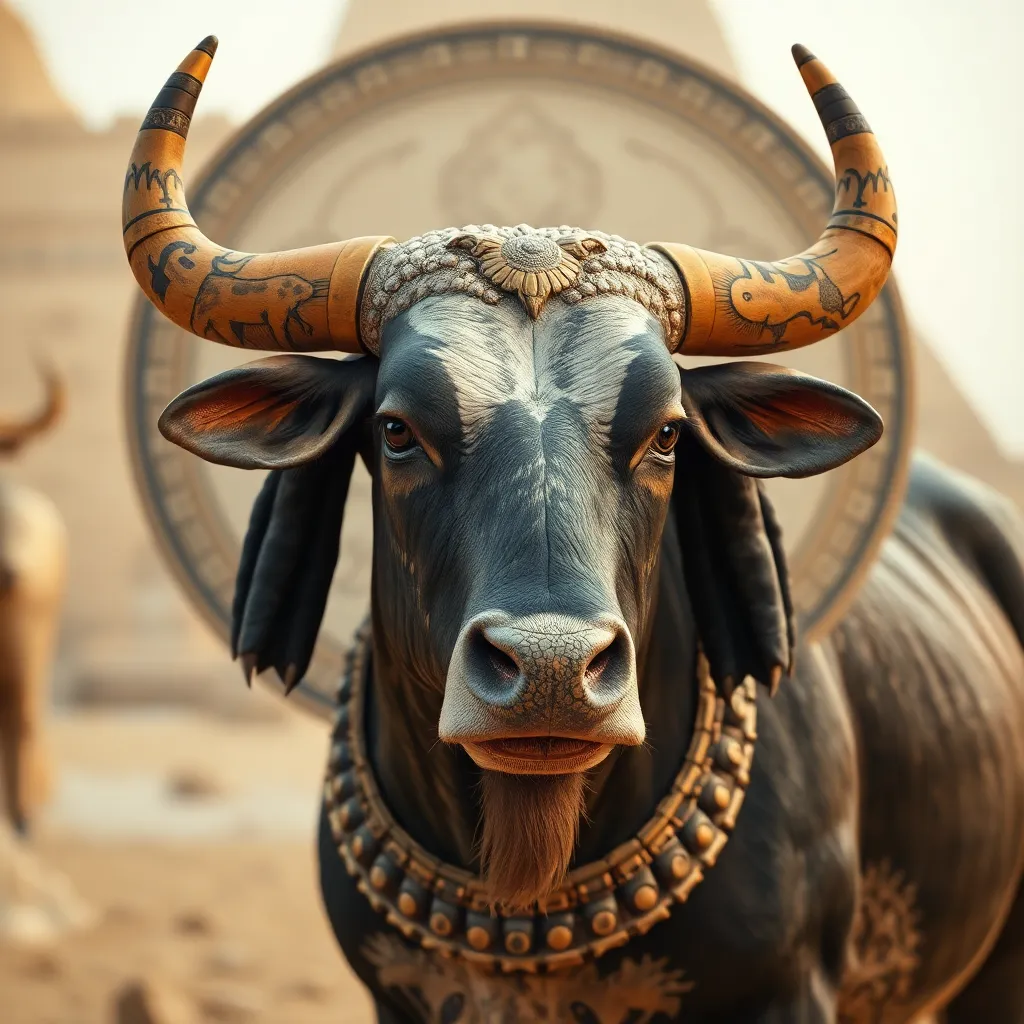The Apis Bull: The Intersection of Myth and Reality
I. Introduction
The Apis Bull holds a significant place in ancient Egyptian culture, embodying a unique blend of myth and reality. Revered as a sacred animal, the Apis Bull was not only a symbol of fertility and strength but also a representation of the god Ptah, the creator deity and patron of craftsmen and architects. This article aims to explore the multifaceted role of the Apis Bull in Egyptian mythology and religion, examining its historical roots, cultural significance, and the rituals associated with its worship.
II. Historical Background of the Apis Bull
The origins of the Apis Bull can be traced back to the early dynastic period of ancient Egypt. It was believed that the Apis Bull was chosen by the gods, distinguished by specific physical traits that marked it as sacred. Over the centuries, the role of the Apis Bull evolved, especially during the Old Kingdom, when it became integral to the religious practices of the time.
Throughout Egyptian history, the Apis Bull was seen as a physical manifestation of divine power, and its presence was associated with prosperity and well-being. Archaeological findings, including tombs, inscriptions, and sculptures, have revealed the importance of the Apis Bull in ancient society. Notable sites, such as the Serapeum of Saqqara, served as burial grounds for these revered animals, showcasing the elaborate care given to them by the ancient Egyptians.
III. Mythological Significance
The Apis Bull is often regarded as a manifestation of the god Ptah. In Egyptian mythology, Ptah was believed to create the world through the power of thought and speech, and the Apis Bull symbolized his creative energy and strength. The bull was associated with fertility, agriculture, and the agricultural cycle, reinforcing its significance in the lives of ancient Egyptians.
Symbolically, the Apis Bull represented:
- Strength and power
- Fertility and abundance
- Life and regeneration
Numerous myths and stories are tied to the Apis Bull, often highlighting its divine qualities and the respect it commanded among the people. These tales served to reinforce the bull’s status as a sacred creature, bridging the gap between the divine and the earthly realms.
IV. Rituals and Worship Practices
The cult of the Apis Bull was one of the most significant religious practices in ancient Egypt. Temples were dedicated to its worship, where priests conducted rituals to honor the bull and ensure its favor. Ceremonies often included offerings of food, incense, and other goods, reflecting the bull’s status as a divine intermediary.
Festivals dedicated to the Apis Bull were grand events, attracting worshippers from far and wide. These celebrations featured:
- Processions to honor the bull
- Offerings and sacrifices
- Ritual dances and music
The death of the Apis Bull was marked by elaborate mourning rituals, as it was believed that the bull’s spirit ascended to join the gods. Its burial was a significant event, often conducted with great care and reverence. The bull was mummified and placed in the Serapeum, where it would be honored in the afterlife.
V. The Apis Bull in Art and Iconography
The representation of the Apis Bull in ancient Egyptian art is prevalent and varied. The bull was depicted in numerous forms, from sculptures to paintings, showcasing its revered status. Artists often highlighted specific features that emphasized its divine nature, such as:
- Distinctive markings on its body
- Jewelry and adornments
- Scenes of worship and offerings
An analysis of artifacts depicting the Apis Bull reveals the extent of its influence on ancient Egyptian culture. The bull’s image adorned temples, amulets, and various ceremonial items, serving as a constant reminder of its sacred significance. The legacy of the Apis Bull also extended beyond ancient Egypt, inspiring artistic expressions in later cultures.
VI. The Connection to Reality: Biological Characteristics
Understanding the physical traits of the Apis Bull provides insight into its revered status. The bull was characterized by a black coat with white markings, a large frame, and an impressive stature. These traits were considered divine signs, affirming its role as a sacred animal.
The breeding and care of the Apis Bull were meticulously managed in ancient times. Special facilities were established to ensure the bulls received proper nourishment and healthcare. This attention to detail reflected the high regard in which the Apis Bull was held, as well as the belief in its divine connection.
Modern comparisons with bovine breeds illustrate the Apis Bull’s unique characteristics. While contemporary breeds may share some traits, the Apis Bull’s distinct markings and stature set it apart as a symbol of the divine in ancient Egyptian culture.
VII. Legacy and Cultural Impact
The influence of the Apis Bull extends beyond ancient Egypt, impacting later cultures and religions. In various traditions, the bull has been associated with strength, fertility, and the divine, highlighting its enduring symbolic significance.
In modern literature and media, the Apis Bull has been referenced as a powerful symbol of creation and renewal. Contemporary interpretations often draw on its mythological roots, presenting the bull as an emblem of resilience and strength in the face of adversity.
Today, the Apis Bull continues to serve as an enduring symbol in society, representing:
- Fertility and abundance
- Strength and power
- The connection between the earthly and the divine
VIII. Conclusion
In conclusion, the Apis Bull stands as a significant figure at the intersection of myth and reality in ancient Egyptian culture. Its representation in mythology, rituals, and art illustrates the profound respect and reverence it commanded. Understanding the Apis Bull enhances our appreciation of ancient Egyptian beliefs and the cultural symbols that shape our understanding of history.
Reflecting on the importance of these cultural symbols, we recognize the Apis Bull’s place in history and mythology as a powerful reminder of humanity’s connection to the divine and the natural world. Its legacy endures, continuing to inspire and resonate with contemporary society.




